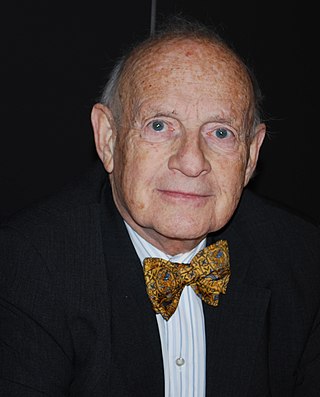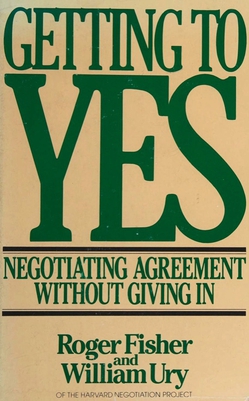Dispute resolution or dispute settlement is the process of resolving disputes between parties. The term dispute resolution is sometimes used interchangeably with conflict resolution.
Mediation is a structured, interactive process where an impartial third party neutrally assists disputing parties in resolving conflict through the use of specialized communication and negotiation techniques. All participants in mediation are encouraged to actively participate in the process. Mediation is a "party-centered" process in that it is focused primarily upon the needs, rights, and interests of the parties. The mediator uses a wide variety of techniques to guide the process in a constructive direction and to help the parties find their optimal solution. A mediator is facilitative in that they manage the interaction between parties and facilitates open communication. Mediation is also evaluative in that the mediator analyzes issues and relevant norms ("reality-testing"), while refraining from providing prescriptive advice to the parties. Due to its voluntary nature, a person cannot be compelled to use mediation to resolve their dispute. However, a suggestion from the Court may be difficult to resist.

Negotiation is a dialogue between two or more parties to resolve points of difference, gain an advantage for an individual or collective, or craft outcomes to satisfy various interests. The parties aspire to agree on matters of mutual interest. The agreement can be beneficial for all or some of the parties involved. The negotiators should establish their own needs and wants while also seeking to understand the wants and needs of others involved to increase their chances of closing deals, avoiding conflicts, forming relationships with other parties, or maximizing mutual gains. Distributive negotiations, or compromises, are conducted by putting forward a position and making concessions to achieve an agreement. The degree to which the negotiating parties trust each other to implement the negotiated solution is a major factor in determining the success of a negotiation.
Roger D. Fisher was Samuel Williston Professor of Law at Harvard Law School and director of the Harvard Negotiation Project.
Conflict resolution is conceptualized as the methods and processes involved in facilitating the peaceful ending of conflict and retribution. Committed group members attempt to resolve group conflicts by actively communicating information about their conflicting motives or ideologies to the rest of group and by engaging in collective negotiation. Dimensions of resolution typically parallel the dimensions of conflict in the way the conflict is processed. Cognitive resolution is the way disputants understand and view the conflict, with beliefs, perspectives, understandings and attitudes. Emotional resolution is in the way disputants feel about a conflict, the emotional energy. Behavioral resolution is reflective of how the disputants act, their behavior. Ultimately a wide range of methods and procedures for addressing conflict exist, including negotiation, mediation, mediation-arbitration, diplomacy, and creative peacebuilding.
Conflict management is the process of limiting the negative aspects of conflict while increasing the positive aspects of conflict. The aim of conflict management is to enhance learning and group outcomes, including effectiveness or performance in an organizational setting. Properly managed conflict can improve group outcomes.
The Program on Negotiation (PON) is a university consortium dedicated to developing the theory and practice of negotiation and dispute resolution. As a community of scholars and practitioners, PON serves a unique role in the world negotiation community. Founded in 1983 as a special research project at Harvard Law School, PON includes faculty, students, and staff from Harvard University, Massachusetts Institute of Technology, Tufts University, and Brandeis University.

An organizational ombudsman is a designated neutral or impartial dispute resolution practitioner whose major function is to provide independent, impartial, confidential and informal assistance to managers and employees, clients and/or other stakeholders of a corporation, university, non-governmental organization, governmental agency or other entity. As an independent and neutral employee, the organizational ombudsman ideally should have no other role or duties. This is in order to maintain independence and neutrality, and to prevent real or perceived conflicts of interest.
The Mutual Gains Approach (MGA) to negotiation is a process model, based on experimental findings and hundreds of real-world cases, that lays out four steps for negotiating better outcomes while protecting relationships and reputation. A central tenet of the model, and the robust theory that underlies it, is that a vast majority of negotiations in the real world involve parties who have more than one goal or concern in mind and more than one issue that can be addressed in the agreement they reach. The model allows parties to improve their chances of creating an agreement superior to existing alternatives.
Organizational conflict, or workplace conflict, is a state of discord caused by the actual or perceived opposition of needs, values and interests between people working together. Conflict takes many forms in organizations. There is the inevitable clash between formal authority and power and those individuals and groups affected. There are disputes over how revenues should be divided, how the work should be done, and how long and hard people should work. There are jurisdictional disagreements among individuals, departments, and between unions and management. There are subtler forms of conflict involving rivalries, jealousies, personality clashes, role definitions, and struggles for power and favor. There is also conflict within individuals – between competing needs and demands – to which individuals respond in different ways.
Dispute Systems Design (DSD) involves the creation of a set of dispute resolution processes to help an organization, institution, nation-state, or other set of individuals better manage a particular conflict and/or a continuous stream or series of conflicts. For an article about systems for dealing with disputes within organizations see also complaint systems.
Alternative dispute resolution (ADR), or external dispute resolution (EDR), typically denotes a wide range of dispute resolution processes and techniques that parties can use to settle disputes with the help of a third party. They are used for disagreeing parties who cannot come to an agreement short of litigation. However, ADR is also increasingly being adopted as a tool to help settle disputes within the court system.

Arnold M. Zack has served as an arbitrator and mediator of labor management disputes since 1957. Born on October 7, 1931, in Lynn Massachusetts, he is a graduate of Tufts College, Yale Law School and the Harvard University Graduate School of Public Administration. He was a Fulbright Scholar, a Wertheim Fellow, President of the National Academy of Arbitrators and member of the College of Labor and Employment Lawyers. He served as a judge of the Asian Development Bank Administrative Tribunal and was President of the Tribunal since 2010. He also served and taught as senior research associate at the Labor and Worklife Program of Harvard Law School and the Harvard Trade Union Program since 1985.

Getting to Yes: Negotiating Agreement Without Giving In is a best-selling 1981 non-fiction book by Roger Fisher and William Ury. Subsequent editions in 1991 and 2011 added Bruce Patton as co-author. All of the authors were members of the Harvard Negotiation Project.
A dispute mechanism is a structured process that addresses disputes or grievances that arise between two or more parties engaged in business, legal, or societal relationships. Dispute mechanisms are used in dispute resolution, and may incorporate conciliation, conflict resolution, mediation, and negotiation.

Lawrence E. Susskind is a teacher, trainer, mediator, and urban planner. He is one of the founders of the field of public dispute mediation and is a practicing international mediator through the Consensus Building institute. He has taught at the Massachusetts Institute of Technology since 1971.
A grievance is a formal complaint that is raised by an employee towards an employer within the workplace. There are many reasons as to why a grievance can be raised, and also many ways to go about dealing with such a scenario. Reasons for filing a grievance in the workplace can be as a result of, but not limited to, a breach of the terms and conditions of an employment contract, raises and promotions, or lack thereof, as well as harassment and employment discrimination.
William Ury is an American author, academic, anthropologist, and negotiation expert. He co-founded the Harvard Program on Negotiation. Additionally, he helped found the International Negotiation Network with former President Jimmy Carter. Ury is the co-author of Getting to Yes with Roger Fisher, which set out the method of principled negotiation and established the idea of the best alternative to a negotiated agreement (BATNA) within negotiation theory.
Mary P. Rowe is an adjunct professor of Negotiation and Conflict Management at the MIT Sloan School of Management, where she specializes in the areas of conflict resolution, negotiation and risk management.